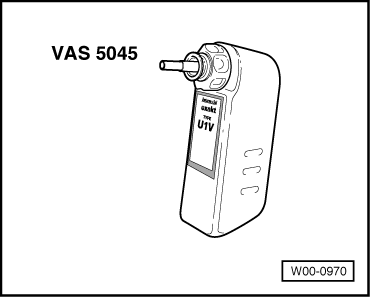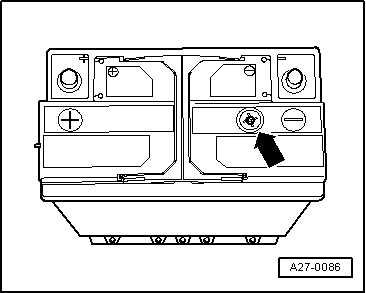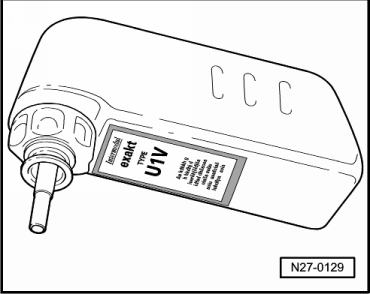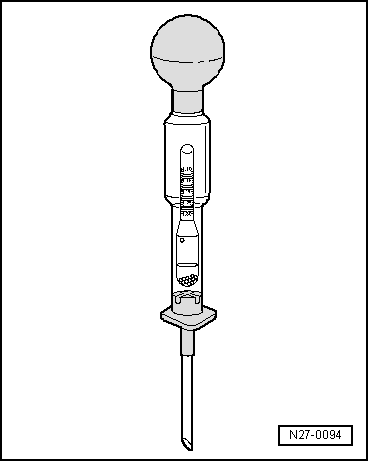A3 Mk1
|
Battery
Checking electrolyte level
Attention:
Always heed accident prevention regulations when handling electrolyte. Always wear suitable protective clothing. Only use torch to illuminate inside of battery casing. Never illuminate inside of battery casing with a naked flame. Keep naked flames and burning cigarettes away from batteries. When disposing of batteries, always pay attention to the appropriate regulations for batteries and sulphuric acid. To ensure that the various battery cover systems do not leak, only screw genuine battery caps into battery openings. In the event of loss or damage, make exclusive use of genuine caps of the same type. The caps must be fitted with an O-ring seal. |
 |
|
|
Special tools and workshop equipment required
Notes:
|
 |
|
|
 |
|
|
Electrolyte level too low Note: If the electrolyte level is too low, drying-out of the cell plates will reduce the capacity (power) of the battery. If the cell plates are not surrounded by electrolyte, the plates, plate links and cell connectors will become corroded. The function of the battery is then not guaranteed and it becomes unusable.
Notes:
|
 |
|
|
Electrolyte level too high Note: If the electrolyte level is too high, escaping electrolyte (mixture of sulphuric acid and water) will cause damage outside the battery, e.g. on components in the engine compartment.
|
